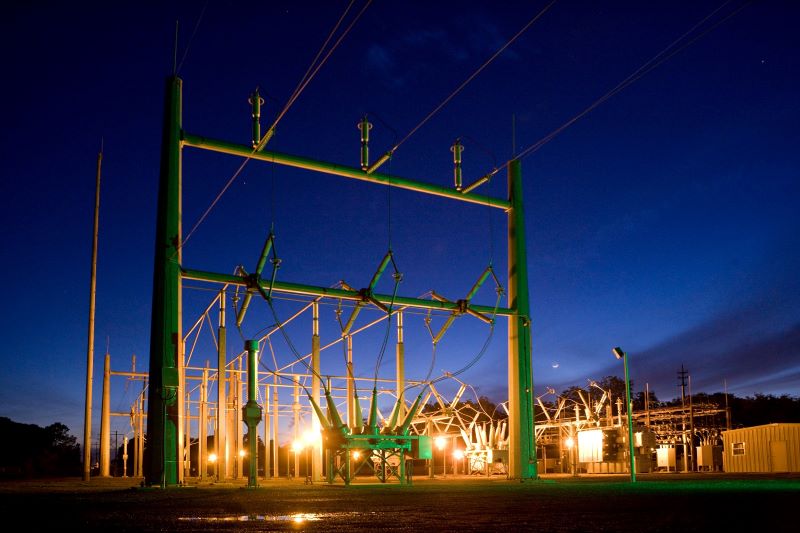DHS releases secure AI for critical infrastructure framework

On November 14, the Department of Homeland Security (DHS) released a set of recommendations for the safe and secure development and deployment of Artificial Intelligence (AI) in critical infrastructure, the “Roles and Responsibilities Framework for Artificial Intelligence in Critical Infrastructure.” This first-of-its kind resource was developed by and for entities at each layer of the AI supply chain: cloud and compute providers, AI developers, and critical infrastructure owners and operators – as well as the civil society and public sector entities that protect and advocate for consumers.
The Artificial Intelligence Safety and Security Board, a public-private advisory committee established by DHS Secretary Alejandro N. Mayorkas, identified the need for clear guidance on how each layer of the AI supply chain can do their part to ensure that AI is deployed safely and securely in U.S. critical infrastructure. This product is the culmination of considerable dialogue and debate among the Board, composed of AI leaders representing industry, academia, civil society, and the public sector. The report complements other work carried out by the Administration on AI safety, such as the guidance from the AI Safety Institute, on managing a wide range of misuse and accident risks.
America’s critical infrastructure – the systems that power our homes and businesses, deliver clean water, allow us to travel safely, facilitate the digital networks that connect us, and much more – is vital to domestic and global safety and stability. These sectors are increasingly deploying AI to improve the services they provide, build resilience, and counter threats. AI is, for example, helping to quickly detect earthquakes and predict aftershocks, prevent blackouts and other electric-service interruptions, and sort and distribute mail to American households. These uses do not come without risk, and vulnerabilities introduced by the implementation of this technology may expose critical systems to failures or manipulation by nefarious actors. Given the increasingly interconnected nature of these systems, their disruption can have devastating consequences for homeland security.
“AI offers a once-in-a-generation opportunity to improve the strength and resilience of U.S. critical infrastructure, and we must seize it while minimizing its potential harms. The Framework, if widely adopted, will go a long way to better ensure the safety and security of critical services that deliver clean water, consistent power, internet access, and more,” said Secretary Alejandro Mayorkas. “The choices organizations and individuals involved in creating AI make today will determine the impact this technology will have in our critical infrastructure tomorrow. I am grateful for the diverse expertise of the Artificial Intelligence Safety and Security Board and its members, each of whom informed these guidelines with their own real-world experiences developing, deploying, and promoting the responsible use of this extraordinary technology. I urge every executive, developer, and elected official to adopt and use this Framework to help build a safer future for all.”
If adopted and implemented by the stakeholders involved in the development, use, and deployment of AI in U.S. critical infrastructure, this voluntary Framework will enhance the harmonization of and help operationalize safety and security practices, improve the delivery of critical services, enhance trust and transparency among entities, protect civil rights and civil liberties, and advance AI safety and security research that will further enable critical infrastructure to deploy emerging technology responsibly. Despite the growing importance of this technology to critical infrastructure, no comprehensive regulation currently exists.
DHS identified three primary categories of AI safety and security vulnerabilities in critical infrastructure: attacks using AI, attacks targeting AI systems, and design and implementation failures. To address these vulnerabilities, the Framework recommends actions directed to each of the key stakeholders supporting the development and deployment of AI in U.S. critical infrastructure as follows:
- Cloud and compute infrastructure providers play an important role in securing the environments used to develop and deploy AI in critical infrastructure, from vetting hardware and software suppliers to instituting strong access management and protecting the physical security of data centers powering AI systems. The Framework encourages them to support customers and processes further downstream of AI development by monitoring for anomalous activity and establishing clear pathways to report suspicious and harmful activities.
- AI developers develop, train, and/or enable critical infrastructure to access AI models, often through software tools or specific applications. The Framework recommends that AI developers adopt a Secure by Design approach, evaluate dangerous capabilities of AI models, and ensure model alignment with human-centric values. The Framework further encourages AI developers to implement strong privacy practices; conduct evaluations that test for possible biases, failure modes, and vulnerabilities; and support independent assessments for models that present heightened risks to critical infrastructure systems and their consumers.
- Critical infrastructure owners and operators manage the secure operations and maintenance of key systems, which increasingly rely on AI to reduce costs, improve reliability and boost efficiency. They are looking to procure, configure, and deploy AI in a manner that protects the safety and security of their systems. The Framework recommends a number of practices focused on the deployment-level of AI systems, to include maintaining strong cybersecurity practices that account for AI-related risks, protecting customer data when fine-tuning AI products, and providing meaningful transparency regarding their use of AI to provide goods, services, or benefits to the public. The Framework encourages critical infrastructure entities to play an active role in monitoring the performance of these AI systems and share results with AI developers and researchers to help them better understand the relationship between model behavior and real-world outcomes.
- Civil society, including universities, research institutions, and consumer advocates engaged on issues of AI safety and security, are critical to measuring and improving the impact of AI on individuals and communities. The Framework encourages civil society’s continued engagement on standards development alongside government and industry, as well as research on AI evaluations that considers critical infrastructure use cases. The Framework envisions an active role for civil society in informing the values and safeguards that will shape AI system development and deployment in essential services.
- Public sector entities, including federal, state, local, tribal, and territorial governments, are essential to the responsible adoption of AI in critical infrastructure, from supporting the use of this technology to improve public services to advancing standards of practice for AI safety and security through statutory and regulatory action. The United States is a world leader in AI; accordingly, the Framework encourages continued cooperation between the federal government and international partners to protect all global citizens, as well as collaboration across all levels of government to fund and support efforts to advance foundational research on AI safety and security.
Source: DHS
Your competitors read IC News each day. Shouldn’t you? Learn more about our subscription options, and keep up with every move in the IC contracting space.








